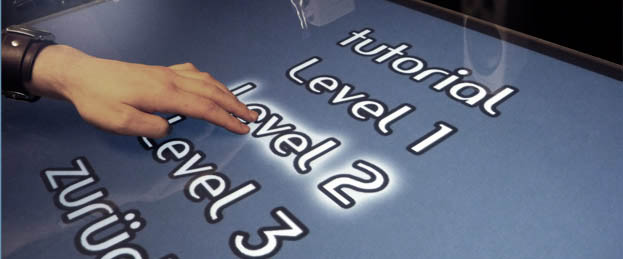Making The Game – Teil 6: Multi-Touch-Geräte und ihre Leistungsgrenzen
Programs and games nowadays have to run not only on a particular platform. So I have chosen some multi-touch devices on which the application in this project should be playable. However, since not all devices have the same capabilities and limitations we have to take a look at the differences in the performance of the devices, so that the application can run smoothly and error-free in the end. In addition to the performance we mainly take a look in to the multi-touch capabilities as well as other natural ways of interacting with the devices. MSI Wind Top AE2060 – All in One PC The MSI Wind Top All-in-one […]


